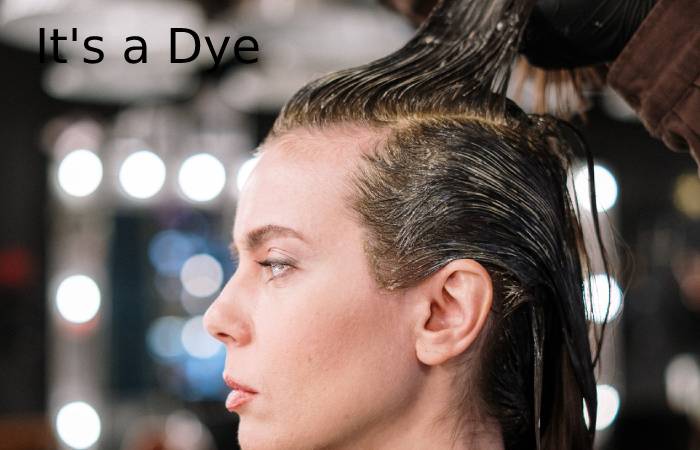How to Revive Hair? – Damaged hair is not limited to split ends. Extremely damaged hair grows cracks in the outer layer (cuticle). Once the cuticle stands raised (opened), your hair is at risk for further damage and breakage. It can also look dull or frizzy and difficult to manage.
So can you go from dry, brittle hair to smooth, shiny locks? The answer isn’t always cut and dry. For the most part, hair damage is everlasting because hair is a collection of dead cells, rendering it beyond repair. The only natural cure is time, a pair of scissors, and taking steps to prevent further damage.
But don’t despair. With proper hair care and specific treatments, you can help restore the outer cuticle and start improving your hair’s appearance of your hair; sometimes, it is evident how you ended up with damaged hair. When misused, dyes and bleach can do a number on your hair.
Read on to find out how to halt further damage and ease its symptoms until you can cut damaged hair.
How to Revive Hair? – Common Causes and Remedies
1. How to Revive Hair? – It’s Dye

Whether you’ve gone pastel, mermaid, or just trying to cover some greys, dyeing your hair at home can have consequences that last longer than the colour. Chemical dyes can strip the natural moisture from your hair, quickly making it rough to the touch. Unless your hair was light, you might have had to bleach it before applying the dye (see “Is it bleaching” below for more on this).
How to Revive Hair? – How to Limit Extra Damage?
Stay in the shade. Experts recommend choosing dye within three shades of your natural colour and opting for darker rather than lighter shades to limit the damage. Unnatural colours are harder to maintain and must be touched more frequently. Colour less often. Spreading the time between touch-ups can also help reduce injury. If possible, allow 8 to 10 weeks, or even more! — between dyeing jobs
To make this more possible: Wash your hair less often. Only use shampoos formulated for coloured hair. Rinse out shampoo and conditioner with cold water. Warm water can cause the cuticle to open or lift, letting the dye wash out. Go to a professional. Salons can be expensive, but colouring is often best left to the professionals. A professional colourist knows how to use the right products to minimize damage.
Limit yourself to one service at a time. If you want to straighten, straighten, or chemically straighten your hair, it’s best to do so at least two weeks before your colouring selection. This gives your hair time to improve between treatments.
How to mitigate present damage Use olive oil. This standard cooking oil is also prevalent in hair care. The oils have remained shown to help rehydrate the hair and cuticle. Olive oil, in particular, is said to benefit soften hair and refill much-needed moisture is also easy to work by and relatively inexpensive. Just be sure to wait a few days after colouring before doing an olive oil treatment
Use a colour-safe shampoo and conditioner. These products are formulated with the correct pH to prevent the hair shaft from swelling and allow the dye to escape. Your colour will last longer, and then your hair will look and feel better
2. It’s Bleach
If you’ve gone from dark towards light hair, you perhaps know all too well the damage bleaching can do to your hair. Bleach remains used to strip the natural colour from each strand. It does this by fluffing up your hair, allowing the bleach to reach the inside of the strand. Here it dissolves the melanin, which gives pigment to your hair. This procedure can leave hair dry, porous, brittle and brittle. Endless variations in the structure of your hair can also make it less intense and elastic.
How to Limit Extra Damage?
Launder less often…or not at all. There is no way to avoid it. Bleaching permanently damages your hair to some extent. The less you do, the better. Add humidity. Before bleaching, pay special attention to moisturizing your hair and avoid other damaging activities, such as heat styling, for a few weeks.
Use sun defence. The sun’s UV rays can hurt your hair. Lightened hair is particularly susceptible to UV damage. Wear a wide-brimmed hat or a headband to protect your hair and scalp. You can also use an anti-UV hairspray to preserve the hair that sticks out. For further benefits, look for products that also contain conditioner.
3. Chlorine
Be extra cautious with chlorine. In addition to turning your locks an unfriendly shade of green, chlorine can strip moisture from your hair, leaving it even more brittle and coarse.
How to Revive Hair? – To Avoid This:
Rinse your hair with fresh water earlier going into the pool. This moisture might help prevent the chlorine from altering the colour of your hair and then drying out your strands. You should also rinse your hair thoroughly as soon as you get out of the pool. Use almond oil. This sweet-smelling oil can benefit soften then strengthen your hair. Apply a dime-sized quantity to the ends of your hair before drying to rehydrate the strands and decrease frizz.
Conclusion
How to Revive Hair? – Unless you take a time machine, you can’t untie hair damage when done. But you can change your habits and stretch your hair with additional love. If you aren’t seeing outcomes after a few weeks, plan an appointment with your doctor or dermatologist. They can judge your symptoms and determine whether an underlying condition may be to blame.


